Contents
Blackwell History of the Ancient World
This series provides a new narrative history of the ancient world, from the beginnings of civilization in the ancient Near East and Egypt to the fall of Constantinople. Written by experts in their fields, the books in the series offer authoritative, accessible surveys for students and general readers alike.
Published
A History of the Hellenistic World
R. Malcolm Errington
A History of the Ancient Near East, second edition
Marc Van De Mieroop
A History of the Archaic Greek World
Jonathan M. Hall
A History of the Classical Greek World, second edition
P. J. Rhodes
A History of the Later Roman Empire, AD 284 621
Stephen Mitchell
A History of Byzantium, second edition
Timothy E. Gregory
A History of Ancient Egypt
Marc Van De Mieroop
In Preparation
A History of the Roman Republic
John Rich
A History of the Roman Empire
Michael Peachin
A History of Babylon, 2200 BC AD 75
Paul - Alain Beaulieu
A History of Greece, ca. 1300 to 30 BC
Victor Parker
This edition first published 2011
2011 Marc Van De Mieroop
Blackwell Publishing was acquired by John Wiley & Sons in February 2007. Blackwells publishing program has been merged with Wileys global Scientific, Technical, and
Medical business to form Wiley-Blackwell.
Registered Office
John Wiley & Sons Ltd., The Atrium, Southern Gate, Chichester, West Sussex, PO19
8SQ, United Kingdom
Editorial Offices
350 Main Street, Malden, MA 02148-5020, USA
9600 Garsington Road, Oxford, OX4 2DQ, UK
The Atrium, Southern Gate, Chichester, West Sussex, PO19 8SQ, UK
For details of our global editorial offices, for customer services, and for information about how to apply for permission to reuse the copyright material in this book please see our website at www.wiley.com/wiley-blackwell.
The right of Marc Van De Mieroop to be identified as the author of this work has been asserted in accordance with the UK Copyright, Designs and Patents Act 1988.
All rights reserved. No part of this publication may be reproduced, stored in a retrieval system, or transmitted, in any form or by any means, electronic, mechanical, photocopying, recording or otherwise, except as permitted by the UK Copyright, Designs and Patents Act 1988, without the prior permission of the publisher.
Wiley also publishes its books in a variety of electronic formats. Some content that appears in print may not be available in electronic books.
Designations used by companies to distinguish their products are often claimed as trademarks. All brand names and product names used in this book are trade names, service marks, trademarks or registered trademarks of their respective owners. The publisher is not associated with any product or vendor mentioned in this book. This publication is designed to provide accurate and authoritative information in regard to the subject matter covered. It is sold on the understanding that the publisher is not engaged in rendering professional services. If professional advice or other expert assistance is required, the services of a competent professional should be sought.
Library of Congress Cataloging-in-Publication Data&
Van De Mieroop, Marc.
A history of ancient Egypt / Marc Van De Mieroop. p. cm. (Blackwell history of the ancient world)
Includes bibliographical references and index.
ISBN 978-1-4051-6070-4 (alk. paper) ISBN 978-1-4051-6071-1 (pbk. : alk. paper)
1. EgyptHistoryTo 640 A.D. 2. EgyptCivilizationTo 332 B.C. 3. Egypt Civilization332 B.C.-638 A.D I. Title.
DS83.V36 2011
932dc22
2010004730
 Illustrations
Illustrations
| 1.1 | The Lower Nubian prince Hekanefer appears as an Egyptian in the representation in his own tomb at Toshka, while in a Theban tomb he is depicted as a typical Nubian |
| 1.2 | The Nile in flood near the Giza pyramids on October 31, 1927, before the building of the Aswan dams |
| 1.3 | Example of an ostracon from the late 19th dynasty |
| 1.4 | Fragmentary king list from the temple of Rameses II at Abydos |
| 1.5 | The macehead of King Scorpion from ca. 3000 BC may show the king digging an irrigation canal |
| 2.1 | Unification symbol of Upper and Lower Egypt on the side of Rameses IIs throne on the facade of Abu Simbel |
| 2.2 | Inscribed labels from tomb U-j at Abydos |
| 2.3 | The palette of King Narmer, front and back |
| 2.4 | Label showing King Den participating in the sed -festival |
| 3.1 | Sneferus pyramid at Meidum |
| 3.2 | Plan of Giza plateau |
| 3.3 | Abusir papyrus |
| 3.4 | King Menkaura with the goddess Hathor and the personification of the Hu nome of Upper Egypt |
| 3.5 | King Khafra and the god Horus |
| 3.6 | Bears captured as booty by King Sahura on his Libyan campaigns |
| 4.1 | Plan of a saff tomb |
| 4.2 | Pyramid texts from the pyramid of King Unas |
| 4.3 | Book of the Two Ways |
| 4.4 | Young King Pepy II on his mothers lap |
| 4.5 | Mortuary stele of the Nubian soldier Nenu |
| 5.1 | Tomb painting from Beni Hassan showing desert people bringing gifts to governor Khnumhotep II |
| 5.2 | List of nomes on Senusret Is temple at Thebes |
| 5.3 | Execration figurine |
| 5.4 | Aerial view showing a re-creation of the Fortress of Buhen |
| 5.5 | Cenotaphs in Abydos |
| 6.1 | Stele of the official Mentuhotep. Alongside the small mummified figure between the mans legs is the text The Syrian woman Sat-Hathor, identifying his deceased wife as a Syrian woman who had an Egyptian name |
| 6.2 | Detail of the Rhind mathematical papyrus |
| 6.3 | Vessel in the Classical Kerma style |
| 6.4 | Plan of a royal tomb at Kerma (K X), with subsidiary graves, a corridor with human sacrificial victims, and a mortuary temple |
| 6.5 | Buhen stele that acknowledges the Nubian ruler Nedjeh |
| 7.1 | Image of the tomb owner Userhat, royal scribe of Amenhotep II, hunting from his chariot |
| 7.2 | Cretan tribute bearers depicted in the tomb of Menkheperrasonb |
| 7.3 | The queen and king of Punt provide gifts to Hatshepsuts emissaries |
| 7.4 | The erased image of Hatshepsut in the temple of Karnak |
| 7.5 | Banquet scene from Rekhmiras tomb |
| 7.6 | Plan of the Amun temple at Karnak |
| 8.1 | The southern colossus of Memnon |
| 8.2 | Scene from the Opet festival in the temple of Luxor |
| 8.3 | Detail of the decoration of Ramoses tomb |
| 8.4 | Talatat showing King Akhenaten sacrificing a duck |
| 8.5 | Alabaster vessel from Tutankhamuns tomb |
| 9.1 | King Sety I and crown prince Rameses offering to the earlier kings of Egypt |

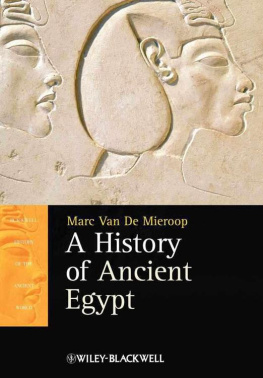

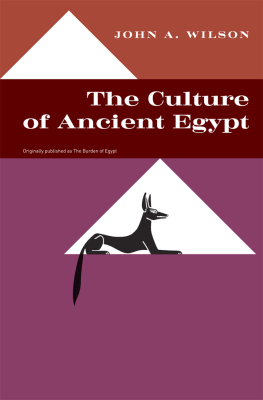
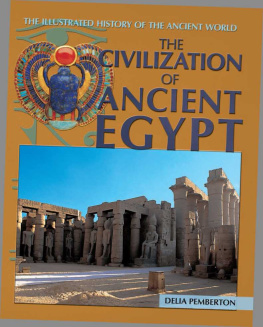
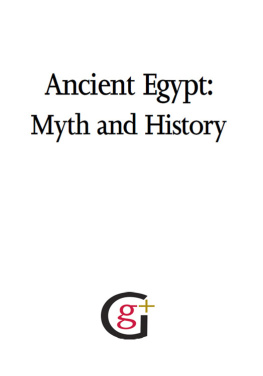



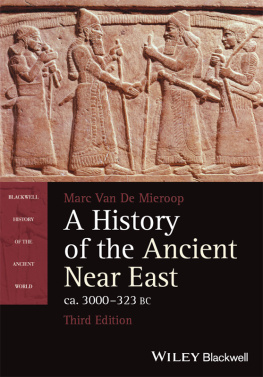

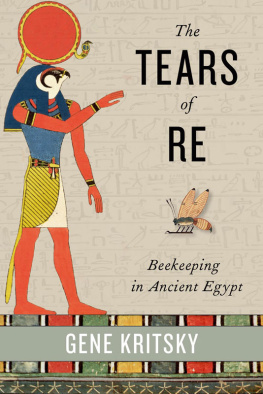

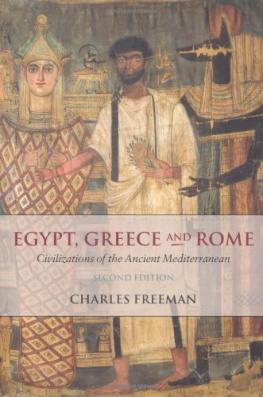


 Illustrations
Illustrations